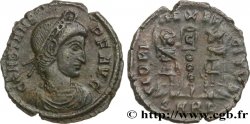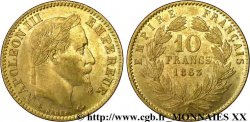fjt_015848 - PARIS - ILE DE FRANCE Alexandre de Sève, prévôt des marchands 1660
140.00 €
Menge
In den Warenkorb

Type : Alexandre de Sève, prévôt des marchands
Datum: 1660
Metall : Silber
Durchmesser : 27 mm
Stempelstellung : 6 h.
Rand lisse
Seltenheitsgrad : R1
Kommentare zum Erhaltungszustand:
Belle patine bleue
N° im Nachschlagewerk :
Vorderseite
Titulatur der Vorderseite DE. LA. 3E. PREVOSTE. DE. MRE. ALEXANDRE. DE. SEVE.
Beschreibung Vorderseite Écu aux armes d'Alexandre de Sève : fascé d'argent et sable à la bordure composée de même.
Rückseite
Titulatur der Rückseite HANC. REX. PACE. BEAT. ; À L'EXERGUE : 1660.
Beschreibung Rückseite Écu aux armes de Paris.
Übersetzung der Rückseite En lui apportant la paix, le Roi la comble de joie.
Kommentare
Alexandre de Sève fut prévôt de 1654 à 1662.
La légende du revers célèbre la Paix des Pyrénées, signée le 7 novembre 1659, qui met un terme à la guerre que se livrent la France et l'Espagne depuis 1635. La "joie" que veut exprimer le revers trouve sa raison dans la principale clause du traité : le mariage de Louis XIV avec sa cousine germaine l'infante Marie-Thérèse, qui permet au Roi d'envisager la succession espagnole.
Alexandre de Sève was provost from 1654 to 1662. The legend on the reverse celebrates the Peace of the Pyrenees, signed on November 7, 1659, which put an end to the war that France and Spain had been waging since 1635. The \\\"joy\\\" that the reverse seeks to express finds its reason in the main clause of the treaty: the marriage of Louis XIV with his first cousin the Infanta Maria Theresa, which allowed the King to consider the Spanish succession.
La légende du revers célèbre la Paix des Pyrénées, signée le 7 novembre 1659, qui met un terme à la guerre que se livrent la France et l'Espagne depuis 1635. La "joie" que veut exprimer le revers trouve sa raison dans la principale clause du traité : le mariage de Louis XIV avec sa cousine germaine l'infante Marie-Thérèse, qui permet au Roi d'envisager la succession espagnole.
Alexandre de Sève was provost from 1654 to 1662. The legend on the reverse celebrates the Peace of the Pyrenees, signed on November 7, 1659, which put an end to the war that France and Spain had been waging since 1635. The \\\"joy\\\" that the reverse seeks to express finds its reason in the main clause of the treaty: the marriage of Louis XIV with his first cousin the Infanta Maria Theresa, which allowed the King to consider the Spanish succession.








 Berichten über einen Fehler
Berichten über einen Fehler Die Seite drucken
Die Seite drucken Teilen meiner Auswahl
Teilen meiner Auswahl Stellen Sie eine Frage
Stellen Sie eine Frage Einlieferung/Verkauf
Einlieferung/Verkauf
 Details
Details













